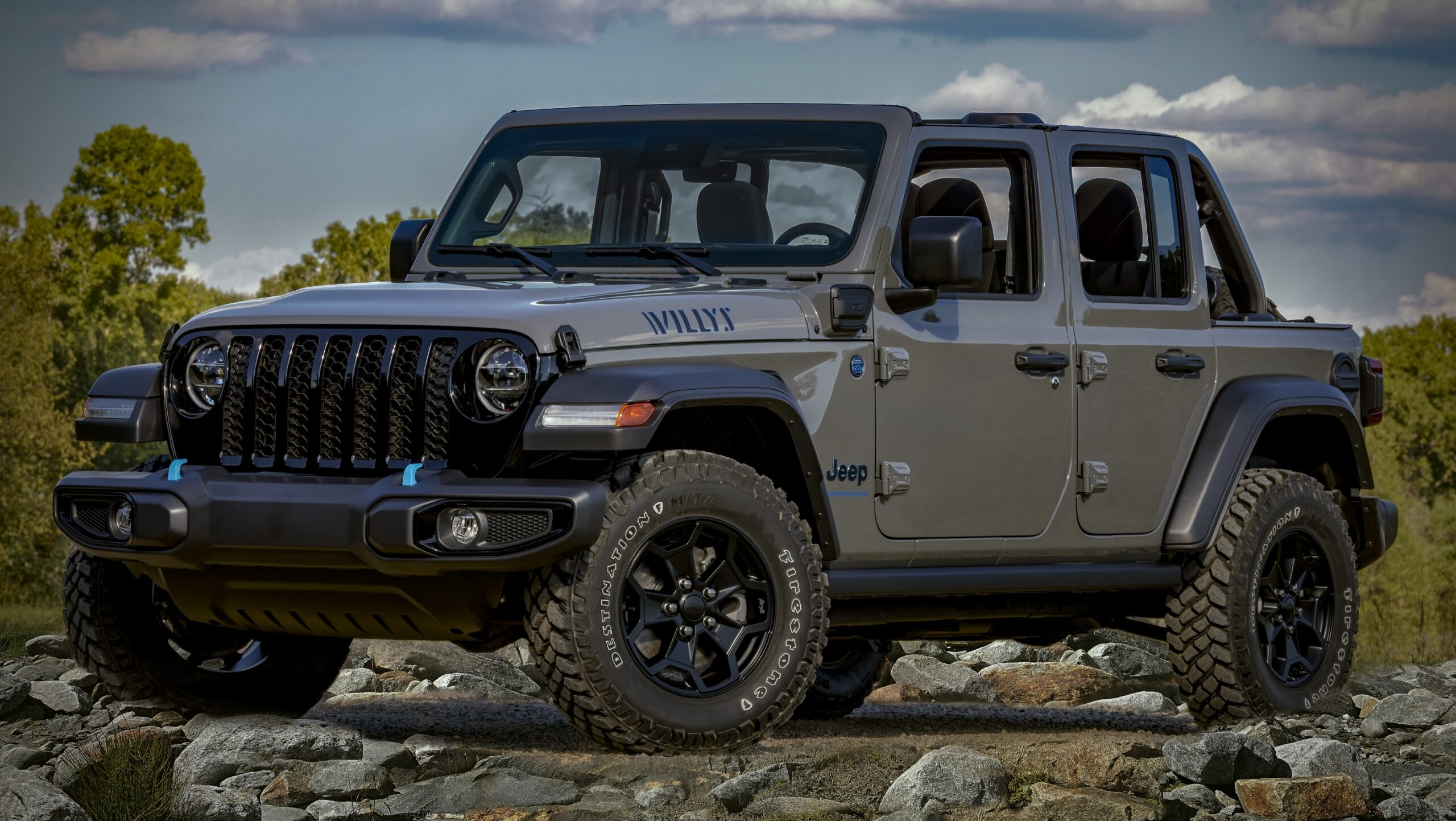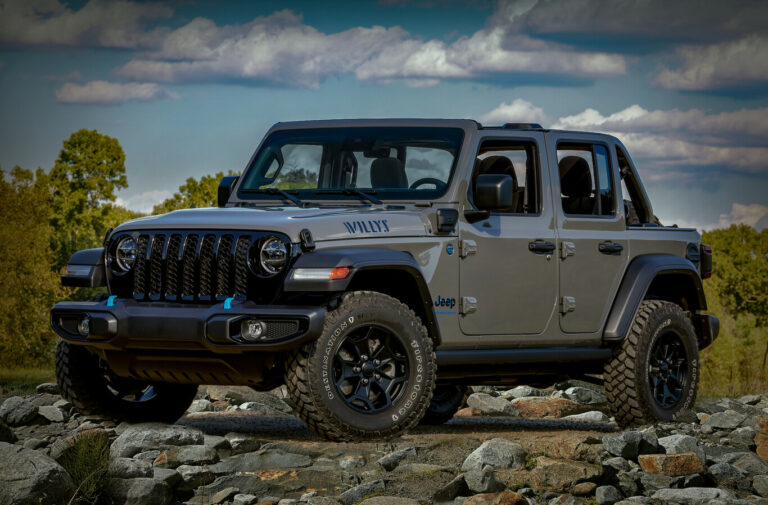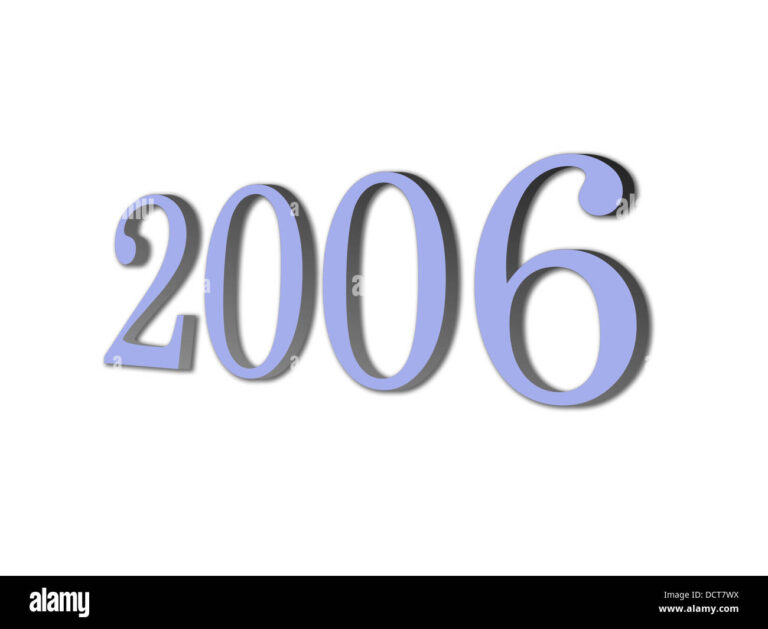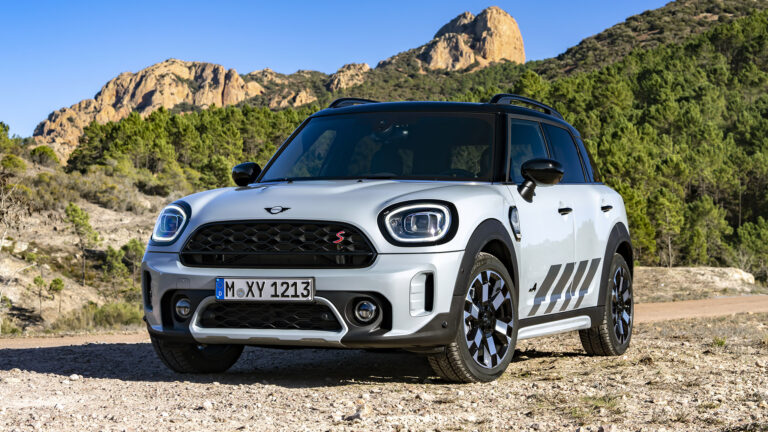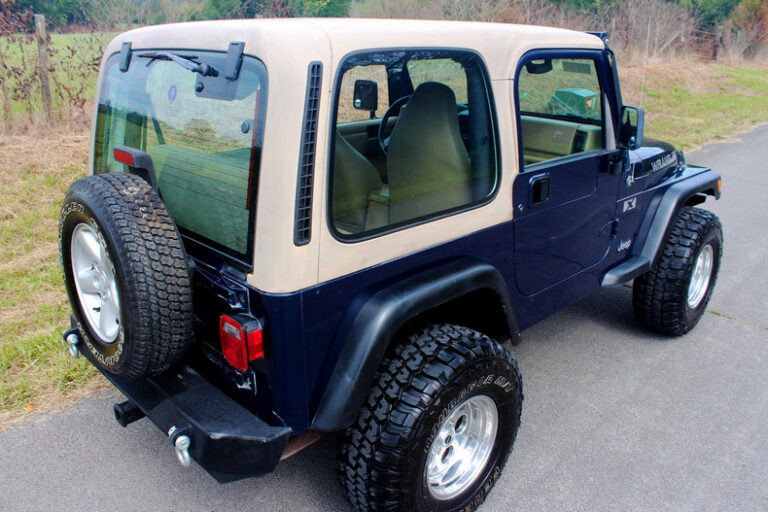Jeep Cherokee Sport For Sale In NY: Your Ultimate Buyer’s Guide
Jeep Cherokee Sport For Sale In NY: Your Ultimate Buyer’s Guide jeeps.truckstrend.com
Introduction: The Enduring Appeal of a Legend in the Empire State
The Jeep Cherokee Sport, particularly the XJ generation (1984-2001), holds a unique place in automotive history. It’s not just a vehicle; it’s an icon, revered for its rugged simplicity, legendary off-road capability, and surprising versatility. In a state as diverse as New York, where you might navigate the bustling concrete jungle of Manhattan one day and explore the challenging trails of the Adirondacks or Catskills the next, the Jeep Cherokee Sport finds a natural home. Its compact size, robust construction, and the venerable 4.0-liter inline-six engine make it a compelling choice for those seeking a durable, capable, and characterful SUV.
Jeep Cherokee Sport For Sale In NY: Your Ultimate Buyer’s Guide
For sale in New York, the Jeep Cherokee Sport often represents a blend of nostalgia, practicality, and adventure. However, buying an older vehicle, especially one that has endured New York’s harsh winters and salty roads, requires careful consideration. This comprehensive guide will delve into everything you need to know about finding, evaluating, and purchasing a Jeep Cherokee Sport in New York, ensuring you make an informed decision and drive away with a true American classic.
The Enduring Allure of the Jeep Cherokee Sport (XJ)
The XJ Cherokee, and particularly its "Sport" trim, carved out a niche that few vehicles have ever matched. It was a revolutionary unibody SUV, offering superior handling and efficiency compared to its body-on-frame predecessors, yet sacrificing none of the Jeep brand’s renowned off-road prowess.
- Legendary Capability: At its heart, the XJ Cherokee Sport boasts serious 4×4 credentials. Most desirable models come equipped with Jeep’s robust Command-Trac (NP231) or Selec-Trac (NP242) transfer cases, offering shift-on-the-fly 4WD or full-time 4WD options, respectively. Combined with solid axles and ample ground clearance, these Jeeps can tackle snow, mud, and rocky trails with surprising ease.
- The Indestructible 4.0L Inline-Six: The jewel in the XJ’s crown is undoubtedly the AMC-designed 4.0-liter HO (High Output) inline-six engine. Known for its incredible durability, ample low-end torque, and relatively simple design, this engine can reliably rack up hundreds of thousands of miles with proper maintenance. It’s a key reason for the XJ’s longevity and desirability.
- Simplicity and Modifiability: Unlike modern SUVs laden with complex electronics, the XJ Cherokee Sport is refreshingly straightforward. This simplicity makes it easier to diagnose and repair, appealing to DIY enthusiasts. Furthermore, an extensive aftermarket community offers countless parts and upgrades, allowing owners to customize their Jeeps for specific off-road adventures, overland travel, or just a unique look.
- Practicality for NY Lifestyles: Its relatively compact footprint makes it surprisingly maneuverable in urban environments like New York City, while still offering enough cargo space for weekend trips upstate or gear for outdoor pursuits. For those in more rural parts of NY, its snow-conquering abilities are invaluable.

Understanding the "Sport" Trim: What Sets It Apart
While the XJ Cherokee came in various trims (Laredo, Limited, Country, Pioneer), the "Sport" trim was often the most popular and, arguably, the most true to the Cherokee’s utilitarian roots.
- Purpose-Built Aesthetics: The Sport trim typically featured less chrome and more body-colored or black trim, giving it a more rugged and athletic appearance. Interior amenities were usually simpler, focusing on durability and functionality rather than luxury.
- Standard Features: Early Sport models might have been quite basic, often coming with manual windows and locks. However, later models (especially post-1997 redesign) often included power windows, mirrors, air conditioning, and a basic stereo system. Crucially, the 4.0L engine and 4×4 system were standard or widely available options, making the Sport a capable base model.
- Value Proposition: For many buyers, the Sport trim strikes the perfect balance between capability and cost. It offers all the core performance benefits of the Cherokee without the added complexity or cost of luxury features, making it an excellent platform for customization or simply a reliable daily driver.
Navigating the New York Market: What to Expect
Buying an older vehicle in New York presents unique challenges and opportunities.
![]()
- The Rust Factor: New York’s winters are notorious for road salt, which is highly corrosive. This means rust is the primary enemy of any older vehicle in the state, especially unibody vehicles like the XJ Cherokee. Pay extremely close attention to the unibody frame rails, rocker panels, floorboards, door sills, and suspension mounting points. Surface rust is common and manageable, but structural rust is a deal-breaker.
- Diverse Availability: You’ll find Jeep Cherokee Sports for sale across New York, from the five boroughs of NYC to the far reaches of upstate. Rural areas might yield more off-road used examples, while suburban and urban areas might have more daily-driven, potentially better-maintained, but still rust-prone units.
- Condition Varies Wildly: Due to their age and the varied lives they’ve led (from suburban grocery-getters to hardcore trail rigs), the condition of XJ Cherokee Sports for sale in NY can range from meticulously maintained showpieces to neglected rust buckets. Pricing will reflect this disparity.
Where to Find Your Jeep Cherokee Sport in NY
Your search for the perfect XJ Sport in New York should cast a wide net.
- Online Marketplaces:
- Craigslist (New York specific): Often the best place for private sellers. Be prepared to filter through many listings and act quickly on good deals. Search multiple regional Craigslist sites (NYC, Long Island, Hudson Valley, Capital Region, Western NY, Syracuse, etc.).
- Facebook Marketplace: Similar to Craigslist, but often with better photos and seller profiles. Look for local automotive groups or dedicated Jeep XJ groups within NY.
- AutoTrader, Cars.com, KBB.com: While these sites cater more to dealerships, you might find private listings or smaller used car lots that specialize in older, unique vehicles.
- eBay Motors: Occasionally, well-maintained or customized XJs will appear here, sometimes with national shipping options.
- Specialty Used Car Dealerships: Some smaller, independent used car lots, particularly those focusing on 4x4s or classic vehicles, might have an XJ in stock. These can offer a bit more peace of mind with basic inspections, but pricing might be higher.
- Private Sellers/Enthusiast Forums: Often the best source for a well-cared-for XJ. Enthusiasts tend to know their vehicles, maintain them diligently, and can provide detailed histories. Check forums like CherokeeForum.com or NAXJA.org for "for sale" sections, focusing on NY-based members.
- Word of Mouth: Let friends, family, and mechanics know you’re looking. You might uncover a hidden gem from someone looking to sell their beloved Jeep.
What to Look For When Buying: A Detailed Inspection Checklist
A thorough inspection is paramount when buying an older vehicle, especially one in New York. Consider these critical areas:
- Rust, Rust, Rust:
- Unibody Frame Rails: Inspect from front to back, especially under the doors and near the rear leaf spring mounts. This is the vehicle’s structural integrity.
- Rocker Panels: The sills below the doors. Often rust from the inside out.
- Floorboards: Check under the carpet (front and rear) for soft spots or holes.
- Fender Wells: Both inner and outer.
- Door Bottoms and Tailgate: Common areas for rust bubbles.
- Brake Lines and Fuel Lines: Trace them from front to back for corrosion.
- Suspension Mounts: Look for severe rust around control arm mounts, shock mounts, and leaf spring shackles.
- Engine (4.0L I6):
- Cold Start: Listen for excessive knocking, ticking (some valvetrain noise is normal), or grinding.
- Oil Leaks: Common areas include the rear main seal (often drips), valve cover, and oil filter adapter. Minor leaks are common, but significant pooling is a concern.
- Cooling System: Check the radiator (look for leaks, clogs), hoses, and coolant color. Brown/sludgy coolant indicates neglect.
- Exhaust: Listen for leaks.
- Transmission:
- Automatic (AW4): Shifts should be smooth, without harsh clunks or slips. Check fluid level and color (should be red, not brown or burnt-smelling).
- Manual (AX15): Shifts should be positive. Listen for grinding.
- 4×4 System:
- Test all modes: 2WD, 4-Hi, 4-Lo (if equipped). Engage 4-Hi and drive a short distance on a loose surface (gravel, dirt) – avoid tight turns on pavement in 4-Hi.
- Transfer Case: Listen for grinding or clunking. Check for leaks.
- Suspension and Steering:
- Steering: Check for excessive play in the steering wheel. Listen for clunks or groans when turning.
- Bushings: Inspect control arm bushings, sway bar bushings, and leaf spring bushings for cracks or wear.
- Shocks: Look for leaks. Bounce each corner of the vehicle – it should settle quickly.
- Tires: Even wear indicates good alignment and suspension.
- Electrical: Test all lights, wipers, power windows, HVAC, and radio.
- Interior: Check seats, headliner, and carpets for wear, tears, and water damage (can indicate leaks).
- Maintenance Records & VIN Check: Always ask for service records. Run a VIN check (CarFax/AutoCheck) for accident history, reported mileage, and title issues.
- Pre-Purchase Inspection (PPI): Crucial. If you’re serious about a vehicle, pay a trusted mechanic (preferably one familiar with Jeeps or older 4x4s) to perform a comprehensive inspection. This small investment can save you thousands down the road.
Navigating the Buying Process in NY
Once you’ve found your ideal Jeep Cherokee Sport, the New York Department of Motor Vehicles (NYSDMV) has specific requirements:
- Title Transfer: The seller must sign over the vehicle title (MV-999). Ensure the VIN on the title matches the vehicle.
- Bill of Sale: While not always strictly required by the DMV for registration, a detailed bill of sale (MV-50) is highly recommended for your records and proof of purchase, especially for private sales.
- Sales Tax: New York charges sales tax on vehicle purchases. For private sales, the tax is based on the purchase price or the vehicle’s market value, whichever is higher.
- Registration and Plates: You’ll need proof of ownership, proof of insurance (NY requires minimum liability coverage), and a valid NY driver’s license. You can apply for registration at any NYS DMV office or online.
- Emissions and Safety Inspection: New York requires annual safety and emissions inspections for most vehicles. Ensure the vehicle can pass before purchasing, especially if buying "as-is." Vehicles 25 years old or older are typically exempt from emissions testing but still require a safety inspection.
Pricing and Value: What to Expect in NY
The price of a Jeep Cherokee Sport in New York varies significantly based on year, mileage, condition, 2WD vs. 4WD, and the presence of rust or desirable modifications. The 1997-2001 models (often called "facelift" models) are generally more sought after due to minor refinements and better interiors.
Here’s an estimated price range for Jeep Cherokee Sport models for sale in NY:
| Year Range | Condition (NY-specific) | 2WD Price Range (USD) | 4WD Price Range (USD) | Notes & Considerations (NY) |
|---|---|---|---|---|
| 1997-2001 | Excellent/Show Quality | $6,000 – $9,000 | $8,000 – $12,000+ | Very rare in NY. Likely low mileage, minimal to no rust, meticulous maintenance, possibly from out-of-state or garaged. Often enthusiast-owned. |
| 1997-2001 | Good/Well-Maintained | $3,500 – $5,500 | $4,500 – $7,500 | Most common desirable range. Minor surface rust, solid unibody, strong mechanicals. May have higher mileage but good service history. Ready for daily driving. |
| 1997-2001 | Fair/Driver Quality | $1,500 – $3,000 | $2,000 – $4,000 | Visible rust on rockers/fenders, some mechanical issues or leaks. Still drivable but will require repairs/TLC. Good for budget-conscious buyers willing to work. |
| 1984-1996 | Good/Well-Maintained | $2,500 – $4,500 | $3,500 – $6,000 | Older "pre-facelift" models. Simpler interiors, potentially more rust if not cared for. Still very capable. |
| Any Year | Project/Parts Vehicle | $500 – $1,500 | $700 – $2,500 | Significant rust (structural concerns likely), major mechanical issues, non-running. Best for experienced mechanics or for parts. |
Note: These prices are estimates for vehicles found in New York and can fluctuate based on specific location, demand, modifications (e.g., lift kits, larger tires), and the urgency of the sale. Rust-free examples command a premium.
Potential Challenges and Solutions
- Challenge: Finding a Rust-Free Example in NY.
- Solution: Be patient. Expand your search to include sellers from less rust-prone regions (e.g., southern states) who might be willing to ship, though this adds cost. Prioritize vehicles with extensive service records and evidence of garaging. A pre-purchase inspection is non-negotiable.
- Challenge: Older Vehicle Maintenance.
- Solution: The 4.0L is robust, but components like sensors, gaskets, and hoses will eventually need replacing due to age. Factor in a budget for immediate maintenance (fluids, filters, spark plugs) and future repairs. Learn basic DIY or find a reputable, old-school mechanic.
- Challenge: Passing NYS Inspection.
- Solution: Ensure all lights, wipers, horn, and safety equipment are functional. Address any check engine lights. For emissions (if applicable), ensure the catalytic converter is present and functioning. A PPI will identify potential inspection failures.
- Challenge: Negotiating Price.
- Solution: Arm yourself with knowledge from your inspection and market research. Be prepared to walk away if the price isn’t right or if the seller is unwilling to address concerns. Highlight any needed repairs during negotiation.
Conclusion: Driving a Piece of History in New York
The Jeep Cherokee Sport (XJ) is more than just an old SUV; it’s a testament to simple, robust engineering and a symbol of adventure. For sale in New York, it offers a compelling blend of legendary capability, surprising practicality, and undeniable character. While the New York climate poses challenges in terms of rust, a diligent and informed buyer can absolutely find a fantastic example.
By understanding the XJ’s unique attributes, knowing where to search, conducting a meticulous inspection, and navigating the nuances of the NY buying process, you can confidently acquire a vehicle that will serve you faithfully, whether you’re commuting through city streets, exploring upstate trails, or simply cruising with the windows down, enjoying the timeless appeal of a true American icon. Embrace the journey, and you’ll find that owning a Jeep Cherokee Sport in New York is not just about transportation; it’s about a lifestyle.
Frequently Asked Questions (FAQ)
Q1: Why is the XJ Cherokee Sport so popular, even today?
A1: Its popularity stems from its legendary 4×4 capability, the nearly indestructible 4.0L inline-six engine, robust unibody construction, simple design (making it easy to work on and modify), and its relatively compact size. It offers a unique blend of ruggedness and practicality.
Q2: What are the best years for the XJ Cherokee Sport?
A2: Generally, the 1997-2001 models (often called "facelift" or "late model" XJs) are preferred. They feature a redesigned interior, improved electrical systems, and minor exterior updates. However, earlier models (1984-1996) are also highly capable and often cheaper.
Q3: What are the most common rust spots on an XJ in New York?
A3: Due to road salt, common rust spots include the unibody frame rails (especially under the front and rear doors), rocker panels, floorboards (check under carpets), rear quarter panels, and around the gas tank skid plate. Always prioritize structural integrity over cosmetic rust.
Q4: Can an XJ Cherokee Sport be a reliable daily driver in NY?
A4: Absolutely, with proper maintenance and if you start with a good example. The 4.0L engine is known for its longevity. However, as an older vehicle, you should expect to perform regular maintenance and potentially address age-related component failures. A pre-purchase inspection is vital.
Q5: Is it hard to find parts for an XJ Cherokee Sport?
A5: No, parts availability is excellent! Due to its popularity and long production run, OEM, aftermarket, and used parts are readily available online, at auto parts stores, and from junkyards. The aftermarket support for modifications is also extensive.
Q6: What’s the difference between 2WD and 4WD XJ Cherokee Sports?
A6: The 2WD (two-wheel drive) models are less common and typically found in warmer climates. They are lighter and slightly more fuel-efficient but lack the off-road and all-weather capability of the 4WD versions. In New York, with its snow and diverse terrain, the 4WD model is overwhelmingly preferred and commands a higher value.
Q7: How much should I budget for maintenance after buying an XJ in NY?
A7: Beyond the purchase price, budget an initial $500-$1500 for immediate maintenance (fluids, filters, spark plugs, basic tune-up) and to address any minor issues found during inspection. For ongoing annual maintenance, expect to spend $500-$1000, depending on your DIY skills and the vehicle’s condition. This is an estimate, and significant repairs could cost more.

